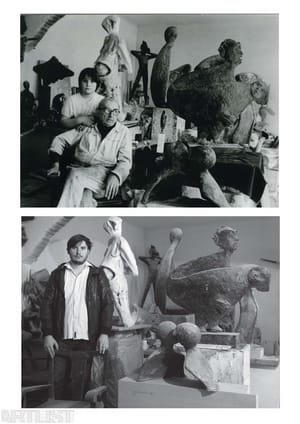- Author
-
Dominik Lang
- Year
- 2011
- Keywords
- Technique and size
installation, dimensions variable
About work
One of Lang’s most striking achievements to date, which brings together several of the main themes of his work, is the installation The Sleeping City, which was exhibited at the Venice Biennale in 2011. At the heart of the project were sculptures by the artist’s father Jiří Lang, which Lang transported from an existing studio to Venice, where he worked on them, sometimes in an almost morbid fashion. The sculptures were carved, reworked, glued, enlarged or left in their original form, set within a staged space in which they blended in with the carefully placed furniture. In several cases the original artwork became merely the material for new, refashioned sculptures. Lang’s manipulation of sculptures by another artist is reminiscent of earlier work including reproductions of works and their recreations. However, in The Sleeping City he used an already existing work and created a new context in which a highly emotional level is plugged into a more generalised history. The collective clashes with the purely personal history of post-war sculpture in the atmosphere of which the originals were created, i.e. with the story of a single, closed oeuvre. Though there is a dialogue present between father and son, The Sleeping City represents more an attempt to come to terms with the material as well as the intellectual legacy that surrounded Lang from childhood. We see a similar endeavour in the works of other Czech artists such as Petr Nikl, Markéta Othová and Martin Zet, except that in terms of the expression and manner of presentation, which is irreverent or seemingly disrespectful to the original work, Lang is the most radical. Coming to terms with the past by refashioning it and situating it within completely new constellations raises questions relating both to the value of sculptures created during the period of normalisation, and to how we should view the artists of that time, albeit somewhat paradoxically by means of a devaluation of the sculptures themselves.
- Author of the annotation
- Zuzana Krišková
- Published
- 2019
Photo
- Note
-
Pavilion of the Czech and Slovak Republic
54th International Art Exhibition — la Biennale di Venezia









